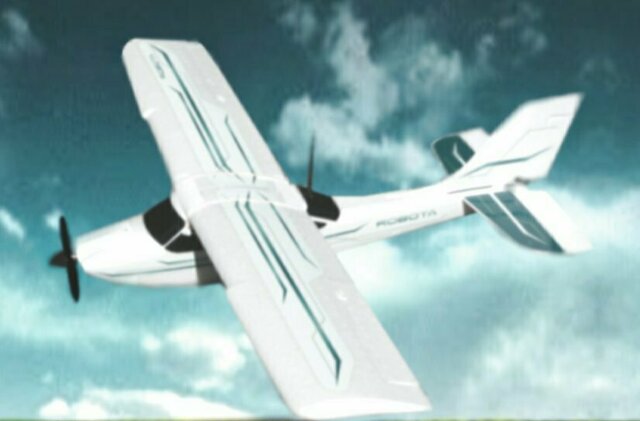Unmanned Aircraft Systems from Robota
(PLEASE USE INNER SCROLL BAR AT RIGHT TO VIEW ENTIRE ARTICLE)
The Robota Triton XL (shown at right) is an electric-powered fixed-wing UAV specially designed to carry our ADC-Lite camera aloft for 60 minutes with its extended length battery (providing the Triton its XL label). The standard Triton payload capacity is 7 to 9 ounces. The Triton is packed with features that enable it to deliver superior imaging performance. Click on the product's name shown in red above for detailed specifications. Click on the photo at right to view the Triton in flight. |
|||
The Triton airframe is equipped with an autopilot, GPS, airborne radio with antenna, a remote control unit for manual override and a battery. Connections available in the airframe include Power and Camera Trigger for the ADC-Lite. The Triton's airframe is designed along the lines of a breakaway chassis in a race car. If the craft should crash, it is the airframe that is the most likely component to sustain damage. The airframe is also extremely inexpensive to repair or replace. The airframe holds and safeguards its electronic and optical contents. If the craft should experience a malfunction in flight and control cannot be restored via the ground control station or the craft's remote manual controller, the airframe is an excellent glider and will simply float to the ground. If the craft should lose communication with ground control, it is designed to fly to a pre-programmed home position. The Triton's ground equipment include instructions, a battery charger, a ground station radio with antenna and ground control station software. Users need to provide their own windows-based laptop to run the ground control software. The Triton's GCS range is 1.5 miles. This can be extended to over four miles with addition of the system's long range radio option (priced at $750 USD). The manual control range extends to line-of-sight (800 yards). Other options include a Triton spares kit (with extra propellers, wing and tail) and a parachute deployment system for situations in which a belly-landing of the craft is not possible. The Triton's GCS software enables users to plan the mission's flight path, identify camera trigger points and monitor the craft as it moves along the pre-planned path. If live video from the craft is desired, users need to provide their own video transmitter. The list price of the Triton XL is $6200. This brings the price of the Triton/ADC Lite bundle to $9995. A complete list of Triton XL optional components is shown here |
|||
